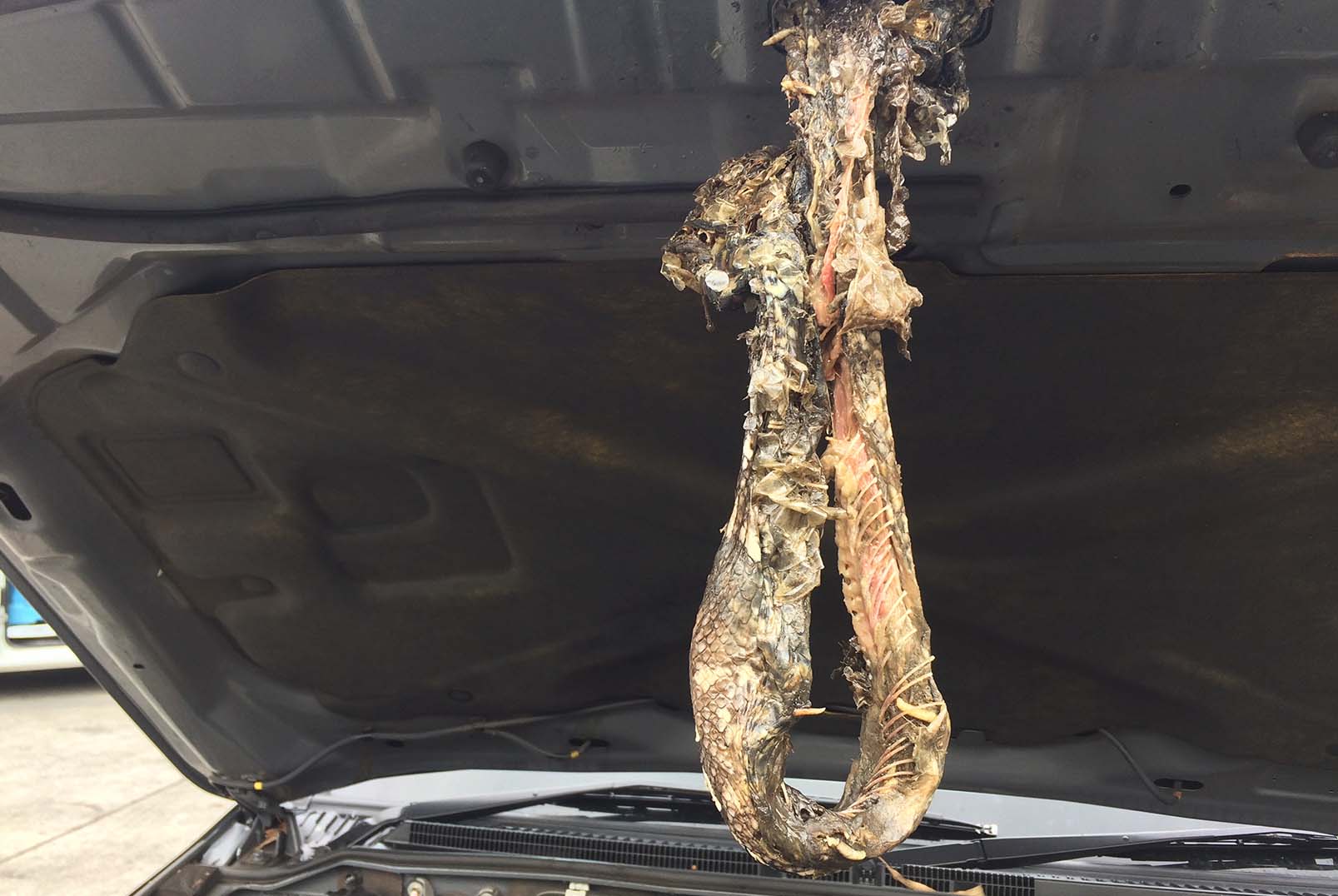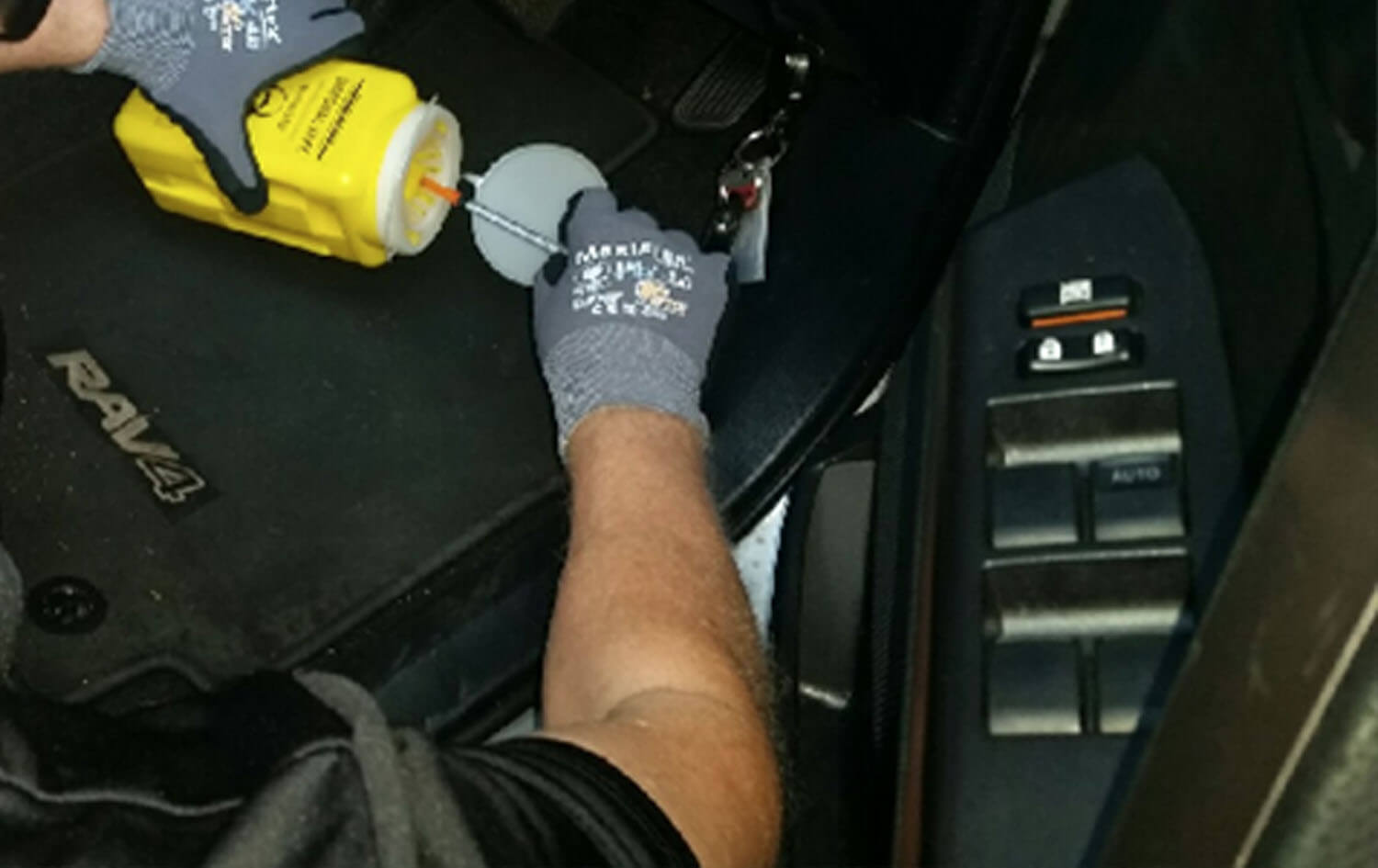Forensic & Bodily Fluids Decontamination

Forensic And Bodily Fluids Autodecon
Vehicle forensic and bodily fluids decontamination clean up includes the removal and remediation of a vehicle contaminated by blood, faeces, urine and other bodily fluids. Vehicles can become contaminated after a motor vehicle accident, self harm incident or other accidental defecation incidents. If bodily fluids are left unattended, they may release protein odour. Protein odours can be difficult to eliminate and the sooner they are attended to, the greater the chances are of successfully removing them.

Vehicle Forensic Decontamination
Vehicle forensic and bodily fluids decontamination involves following stringent procedures, created to protect technicians from possible contraction of pathogens. If the vehicle is highly contaminated, surfaces that have been affected may need to be removed, wrapped for incineration and disposed.
In some instances and depending on their porosity, surfaces may only require a thorough clean with enzyme technology products. Enzyme based products allow for the proteins in the contaminant to be digested leaving the surface clean and safe. These products are only effective on hard and non-porous surfaces.

Sharps Disposal & Decontamination
As part of Juvenaire’s vehicle forensic and bodily fluids decontamination service, every vehicle will undergo an initial assessment for the identification of the type and level of contamination and undergo a thorough sweep for sharps.
This sweep is necessary to comply with Workplace Health and Safety – to provide a safe work environment for the technicians involved in the project. Every project will have this stringent safety protocol initiated before any further works are undertaken.

More AutoDecon Information
Learn More
Our Technicians will ensure the safe decontamination and disposal of asbestos affected vehicles.
Juvenaire ensures stringent Workplace Health and Safety processes are all in accordance with government asbestos
Learn More
The manufacture of illicit drugs especially methamphetamine, has increased in private residences, caravans, hotels, garages and inside motor vehicles. Manufacturing methamphetamine involves a cooking process where mixtures of dangerous chemical vapours permeates all porous surfaces.
This fills the vehicle’s interior with harmful chemicals. Determining the extent of contamination is necessary in deciding which internal structures and contents need a thorough clean or possible removal.
Learn More
When water enters a motor vehicle, absorption of water into door linings, seats, carpets, the sub-floor, the dashboard and other soft furnishings can cause serious damage. If left untreated, water absorption can result in mould growth and can cause further damage. Time is of the essence and swiftly addressing a water impacted vehicle is paramount to its successful remediation.
Learn More
As an industry leader in mould remediation, Juvenaire has studied, trialled and implemented various mould removal methods with great success. Through stringent testing these advanced methods have proven to be the most successful within the industry.
Learn More
Vehicle fire and smoke damage can cause strong odour. This is a result of the chemicals produced from burning materials, absorbing into porous materials of the vehicle. Smoke odour can be very difficult to remove but is possible if treated correctly.
Learn More
There are two types of odours, “real odour” a pure sensation of smell transmitted to the brain and ‘psychological odour’ or ‘heightened awareness odour’ that people think they smell based on experience, suggestion and past experience. The latter is the most difficult odour to address for the restoration technician.
Odour can be difficult to eliminate. As such Vehicle assessment will take place on a case by case basis.